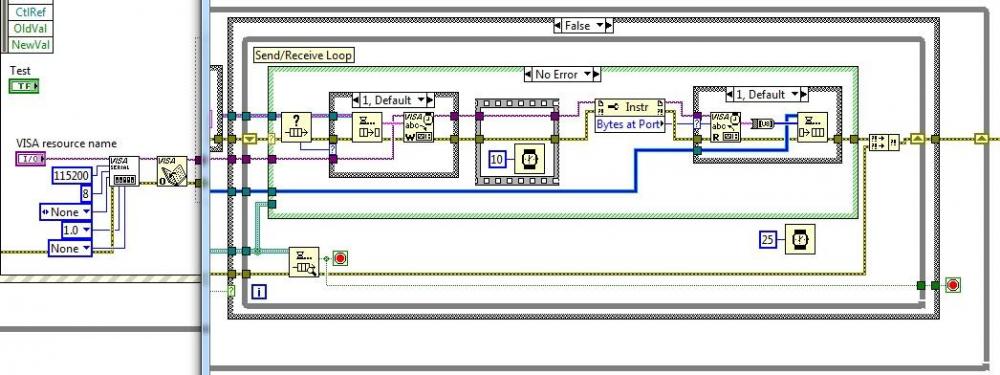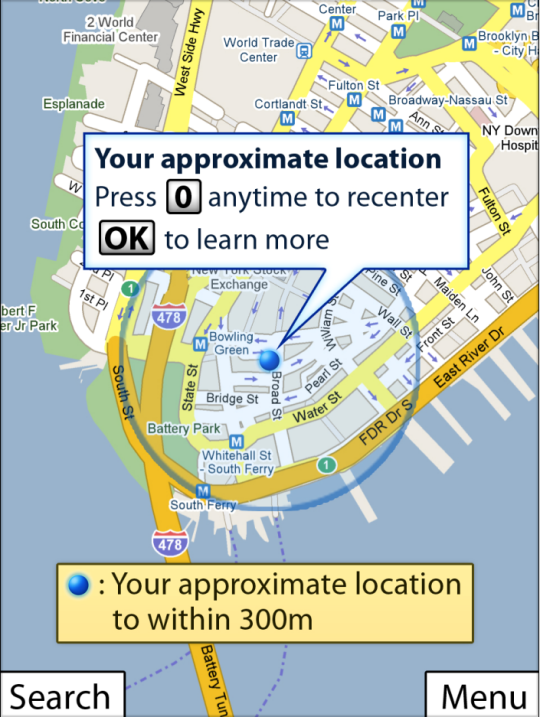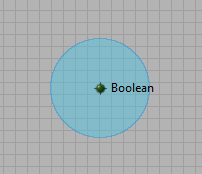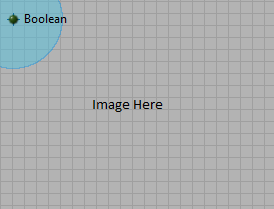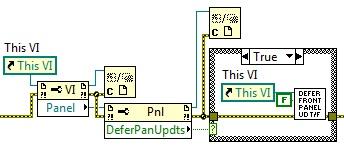-
Posts
17 -
Joined
-
Last visited
Profile Information
-
Gender
Male
-
Location
State College, PA
LabVIEW Information
-
Version
LabVIEW 2011
-
Since
2007
Contact Methods
-
Twitter Name
eWeirbo
Recent Profile Visitors
1,813 profile views
ErikTheRed's Achievements
Newbie (1/14)
0
Reputation
-
I'm running a queue controlled multi-loop many master/many slave data parser (among other features), and gosh darn it if it isn't mostly working! However, one issue that I'm running into is an extremely un-reproducible error in the serial data read/write loop out to a USB Telegesis module. I can't seem to replicate it, and when it happens, it may happen a few times in a row, but usually upon a software reset, disappears again. This software will be running for a significant period of time without user intervention, so I can't afford to have this happen when someone's not around to fix it. Any ideas? The Error: -1073807360,Property Node (arg 1) in ...(my top level vi).vi The Code: Thanks for the help!
- 3 replies
-
- visa
- bytes at port
-
(and 3 more)
Tagged with:
-

Database Errors after switching to MS SQL Express Database
ErikTheRed replied to ErikTheRed's topic in Database and File IO
I had previously tried googling the error codes to no avail. However, when I was generally googling around, I found a post where someone was complaining about LV using only a few recordset identifiers per connection. It turns out that recordsets were overwriting each-other when multiple parallel loops were executing queries. I opened a new connection to the database for each loop I had running, and I have not seen the error return. TLDR: Don't perform multiple actions on a database with the same connection at once. Multiple connections to the database will allow concurrent transactions. -
Hello, I'm having a fair bit of difficulty tracking down these errors that I'm getting. I'm not sure exactly what to provide to get the best help here, so I'll post the errors and start prepping some code snippets if they are needed. I recently migrated from an Access database to an SQL database, my code has a number of read/writes on the same connection (i.e. I open the connection at the beginning of the software with multiple parallel loops, and utilize that connection, sometimes in parallel loops, without closing it until the end). I'm running into errors with a few of the simple recordset and properties functions as follows: -1/18/2012 4:13:10 PM------------------1,-2147217906,NI_Database_API.lvlib:Rec Move To Next Record ®.vi:2->Tag_Data to Cluster.vi:1->Device Table DB - Return Router EUIs and Positions.vi->LE - Package v4 for Learning Factory (no RYG) (SQL).vi->BuzNet TopLevel 4.2.3.vi<ERR>ADO Error: 0x80040E0EException occured in Microsoft OLE DB Provider for ODBC Drivers: [Microsoft] Invalid bookmark value in NI_Database_API.lvlib:Rec Move To Next Record ®.vi:2->Tag_Data to Cluster.vi:1->Device Table DB - Return Router EUIs and Positions.vi->LE - Package v4 for Learning Factory (no RYG) (SQL).vi->BuzNet TopLevel 4.2.3.vi-1/18/2012 4:15:43 PM------------------1,-2147352567,NI_Database_API.lvlib:Rec Get Recordset Properties ®.vi:2->NI_Database_API.lvlib:DB Tools List Columns.vi:2->Device Table DB - Return Device Data for EUI.vi->LE & Device Table DB - Log Location Calculation (SQL).vi->LE - Package v4 for Learning Factory (no RYG) (SQL).vi->BuzNet TopLevel 4.2.3.vi<ERR>ADO Error: 0x80020009Property Node (arg 2) in NI_Database_API.lvlib:Rec Get Recordset Properties ®.vi:2->NI_Database_API.lvlib:DB Tools List Columns.vi:2->Device Table DB - Return Device Data for EUI.vi->LE & Device Table DB - Log Location Calculation (SQL).vi->LE - Package v4 for Learning Factory (no RYG) (SQL).vi->BuzNet TopLevel 4.2.3.vi These errors occur at random intervals, though it seems that the first one ([color=#000000]-2147217906) happens much more frequently. I've been swatting these two bugs (i.e. suppressing and logging) and ultimately was faced with a third error:[/color] [color=#000000]1,1,"NI_Database_API.lvlib:Rec Delete.vi"<ERR>Object 0x000000 is not valid.[/color] [color=#000000]--that ultimately killed the program.[/color] I think it might be something with synchronous selects/writes but it's very hard to tell given the data I have... [color=#000000]Can anyone help me with a next step?[/color] [color=#000000]Thanks![/color] [color=#000000]Erik[/color]
-
Does anyone have a solution for the above behavior given that i'm using the ring picture control? (Besides playing with the order and placing some sort of background image that stencils the picture control out of the front panel?) Thanks for the continued help Erik
-
Thanks so much for the advice. This seems like a (near) perfect fit for what I want to do. I'm sorry that it took so long to detail all of the requirements, but thanks for sticking with me! Done.
-
Okay, so really I will have to have a singular transparent picture indicator that i can transfer my current mouse gestures onto. However, I don't know how to get the behavior of 'Graphics & Sound\Picture Functions\Draw Grayed Out Rect.vi' (i.e. the partial transparency) for a circle... I'm looking for documentation for the opcodes... 15 appears to be 'greyed out rectangle'... Thanks, Erik
-
I would like to make the image below the transparent floating picture control still clickable... Will the overlapping of controls preclude an event from being generated when I click on the image? Or can I make picture control effectively invisible and non-interact-able with a property node? I will potentially be using more than one "accuracy circle", so my thought was to overlay an equally sized transparent picture control on top of the current picture control and update that as needed with a multitude of circles... however, a few floating picture controls might be more efficient. Erik
-
Thanks, I had no idea what that 'T' was. I'm utilizing the panel updates, but there's a fair amount of image transformation and updating to reflect mouse pressing and other updates to the system. I'll try it out and see what the performance is like .
-
Thanks much, I'll take a look and see if I can post an update touting my success .
-
I'm not exactly sure where the transparency can be set in the picture control, but I'll check it out. That might be my best option, though everything I add keeps slowing it down! I took a short look and was intimidated! Do you have any favorite/recommended tutorials to get me started? Thanks for the advice!
-
I am trying to create a custom indicator (currently a boolean) that approximates the blue ring with central dot that exists in Google maps (particularly the mobile version, see image below) to show uncertainty. Is there a way to create the indicator so that I can change the size of the outer ring, while keeping the dot in the middle the same size? The google maps circle: The desired indicator: Other ways to approximate this behavior that I've thought of are to have two different sized rings for the true and false cases on the boolean indicator that i'm moving around... if there are ways to do more than two cases for an indicator, I could use this instead. Additionally, I thought of drawing the "blur" around the indicator on a background image, but this seems like it'd be too slow (as this is happening in real time). Or of potentially having two separate indicators that I move around (though this would also be slower). In a related problem, if I'm working with these indicators over an image, is there a way to cut off any piece of the indicator that goes outside of the image? i.e. Erik
-
Thanks for the response. I'm only slightly confused on what an action engine is... is this a state machine or an event structure? The program that this is inside is quite complicated with quite a few loops, so it's almost impossible to utilize shift registers since other loops need to defer updates as well. (Would this work if I added another event loop?) Also, just trying to understand your provided diagram... is the while loop that you've provided, that is a one-time-run (true on the stop terminal), made to keep those shift registers populated within a subVI? Does this require any settings to work? Thanks again!
-
In my front panel, I defer updates frequently to prevent piecemeal updates. I have a subVI to defer/un-defer updates, sometimes when the VI comes to this piece of code, updates have NOT been deferred (in other pieces of code). Is it more efficient and faster to read from the 'DeferPanUpdts' property and if it is false, already, skip the rest of the code? Or is it better to just blindly write false to the 'DeferPanUpdts' property... Blindly writing false will cause a single Write action, checking would cause always a single Read, and sometimes a Write. (sometimes is likely a decent percentage of the time...). Images below: Checking the Defer Update before writing false. Defer SubVI. Thanks! EDIT: I realize this might better be posted in the GUI sub forum... if a moderator could move it, that would be fantastic, if not... please accept my apologies for posting in the wrong forum, I question whether I should repost...
-
Thanks for the reply ned. I suppose that it seems complicated due to the sheer number of loops involved (i.e. event driven master/slave (2 loops) plus the data acquisition loop, and a slave parser loop then adding the event driven real time gui (3 loops). I have been working on labview for a while, but am only recently getting the hang of it from a development standpoint (and sometimes wishing I were back in C!), so I don't know how well LV will handle all of these tasks in parallel. I was trying to simplify the code size of the GUI by splitting the two up... but it seems like the best approach might just be to put them together. The loading of the subpanel gives no real error. Just that none of the controls/colors/indicators or anything else shows up... it's the same blank screen as before it was "loaded." I can, however, load some smaller VIs that have only simple controls (the current gui does a LOT of image work). Also the fact that I'm using system and custom controls may be an issue? I don't exactly understand the utility of subpanels in this instance, it seems like putting it all together might be the best option...


